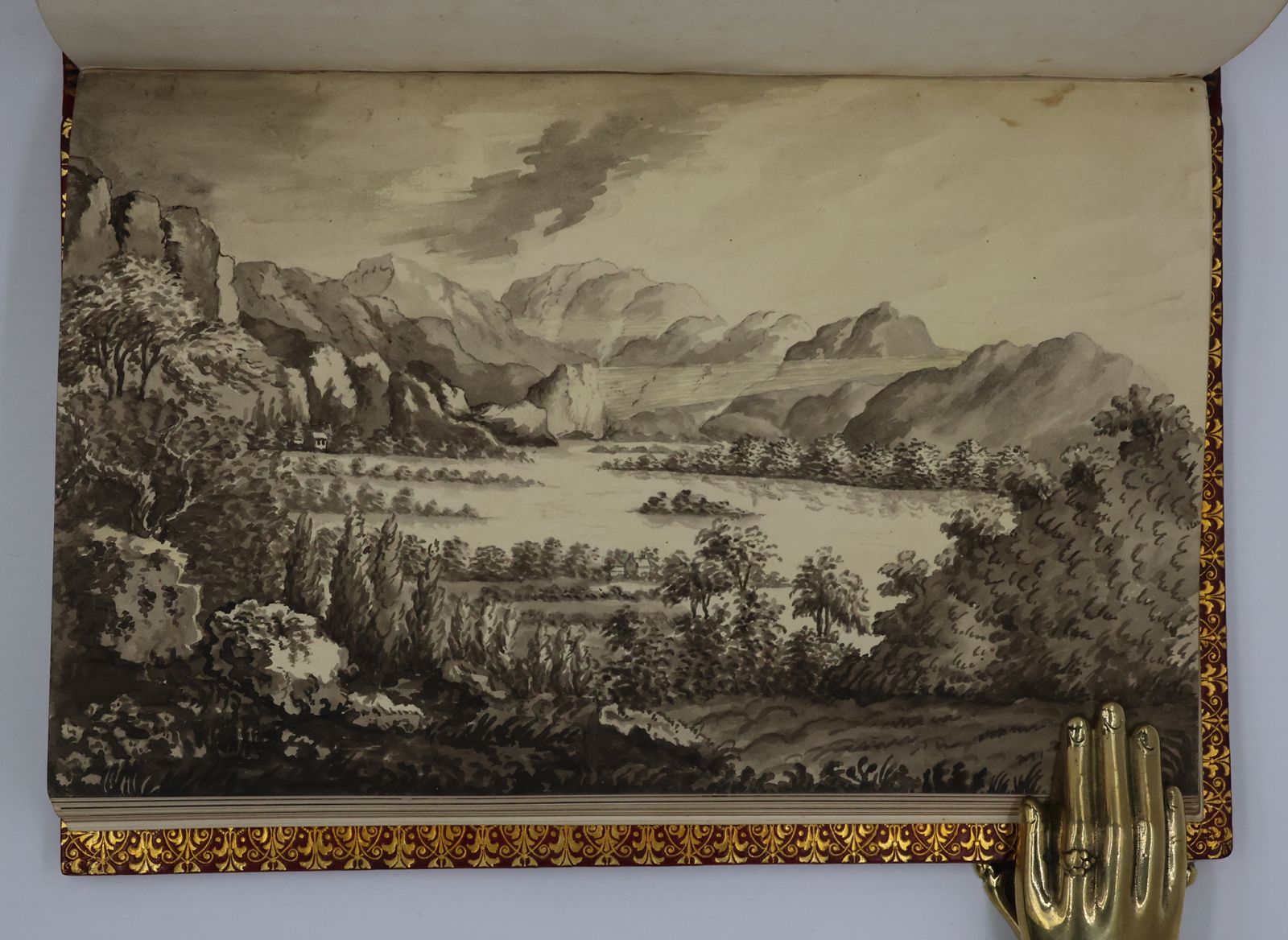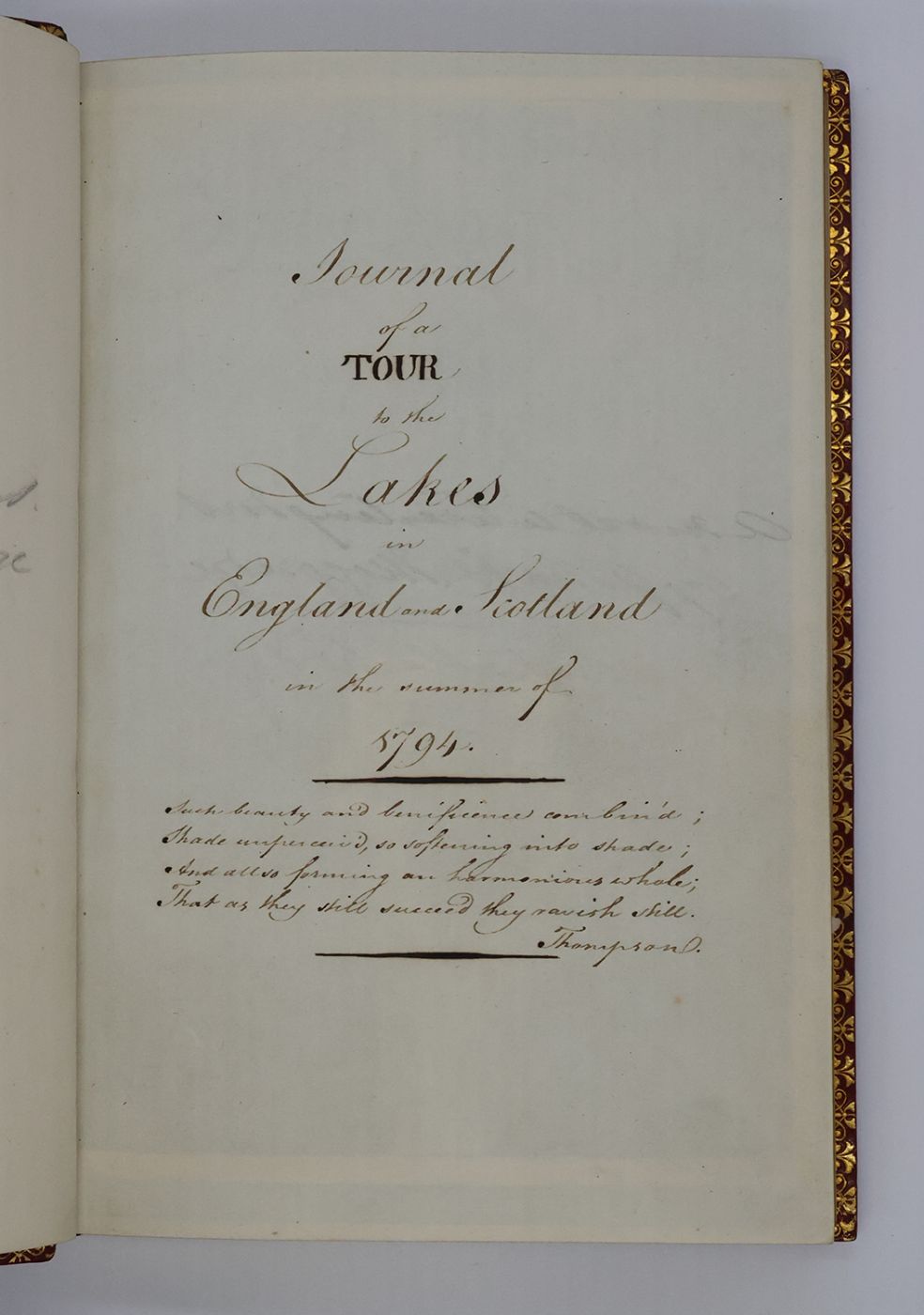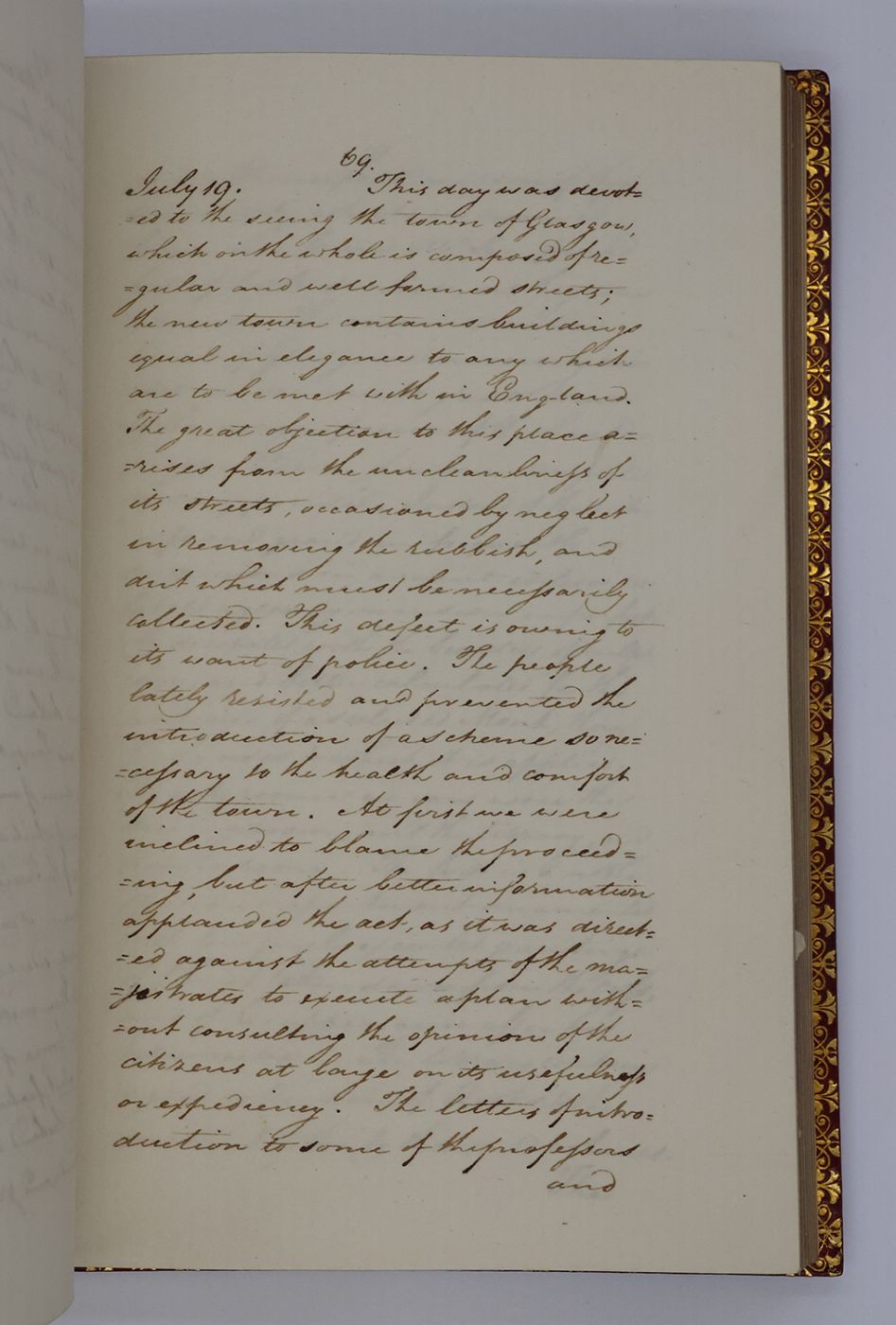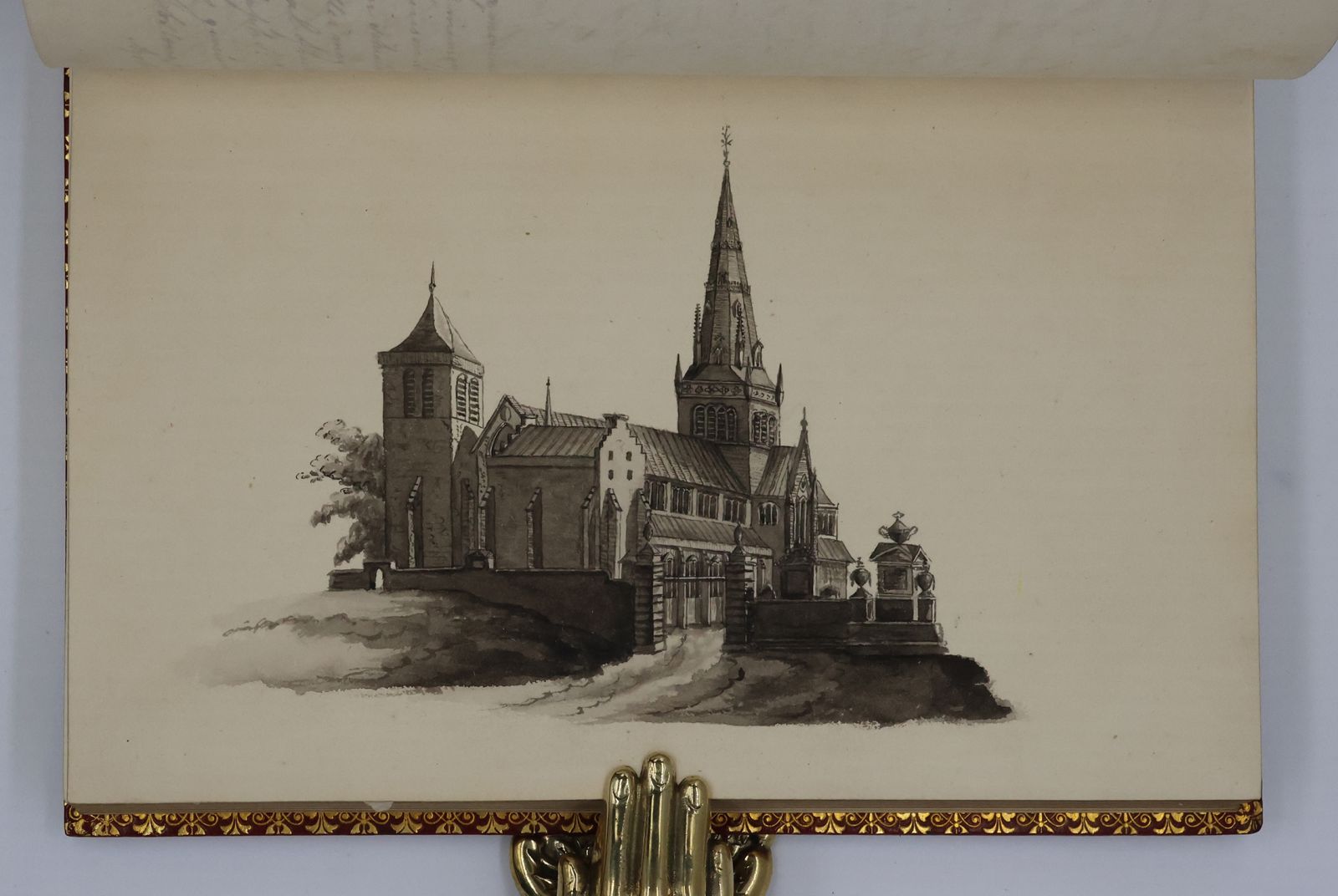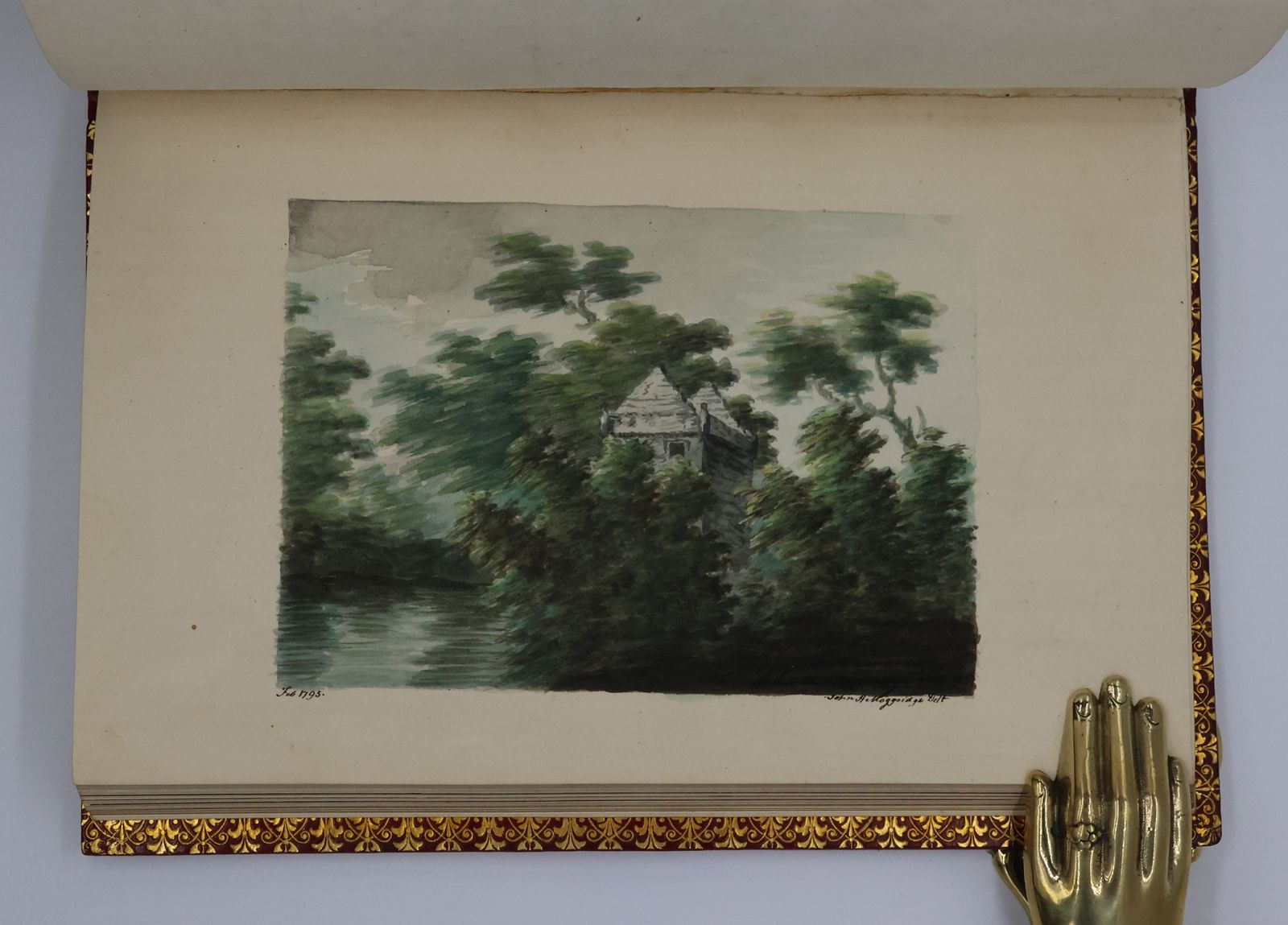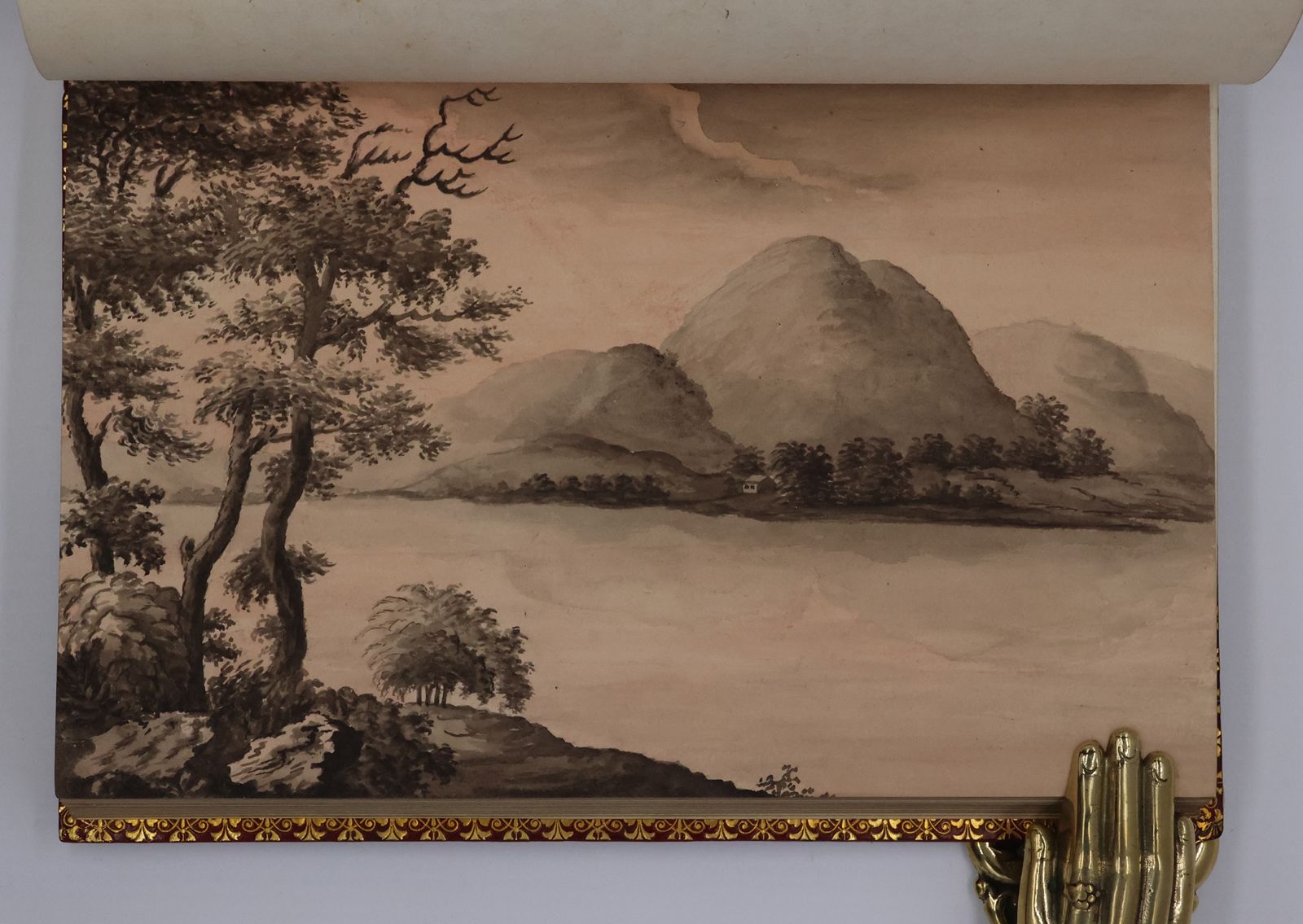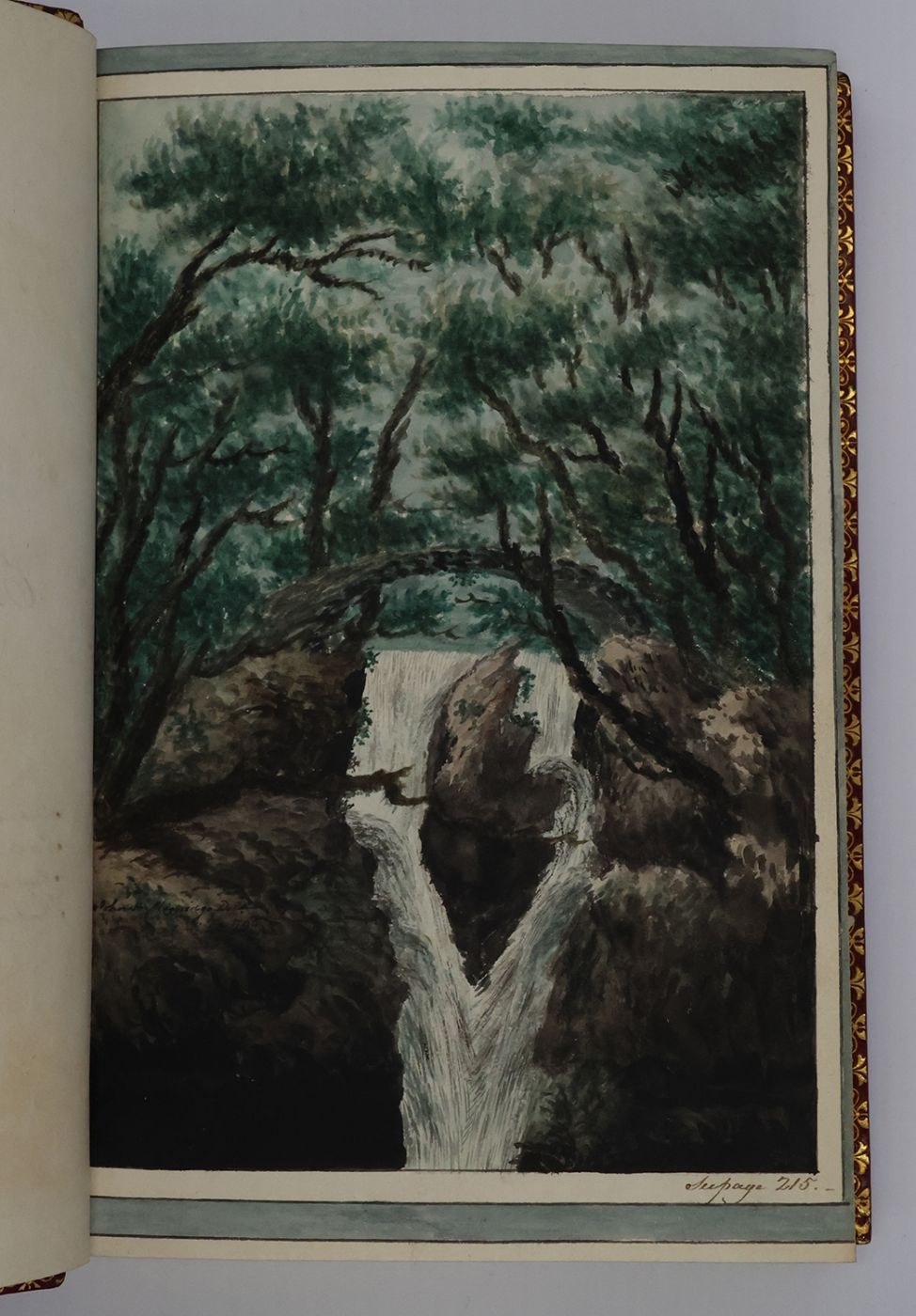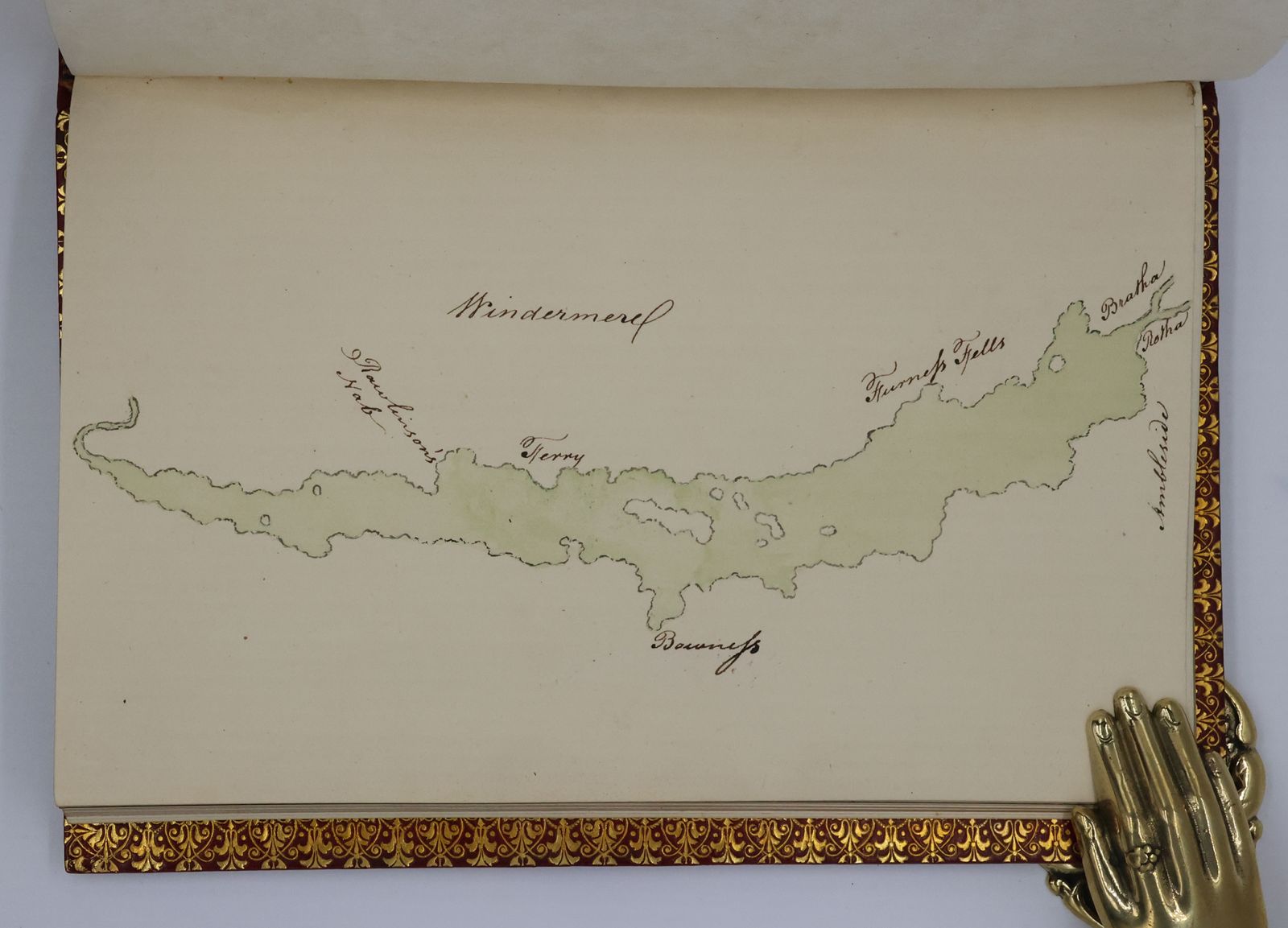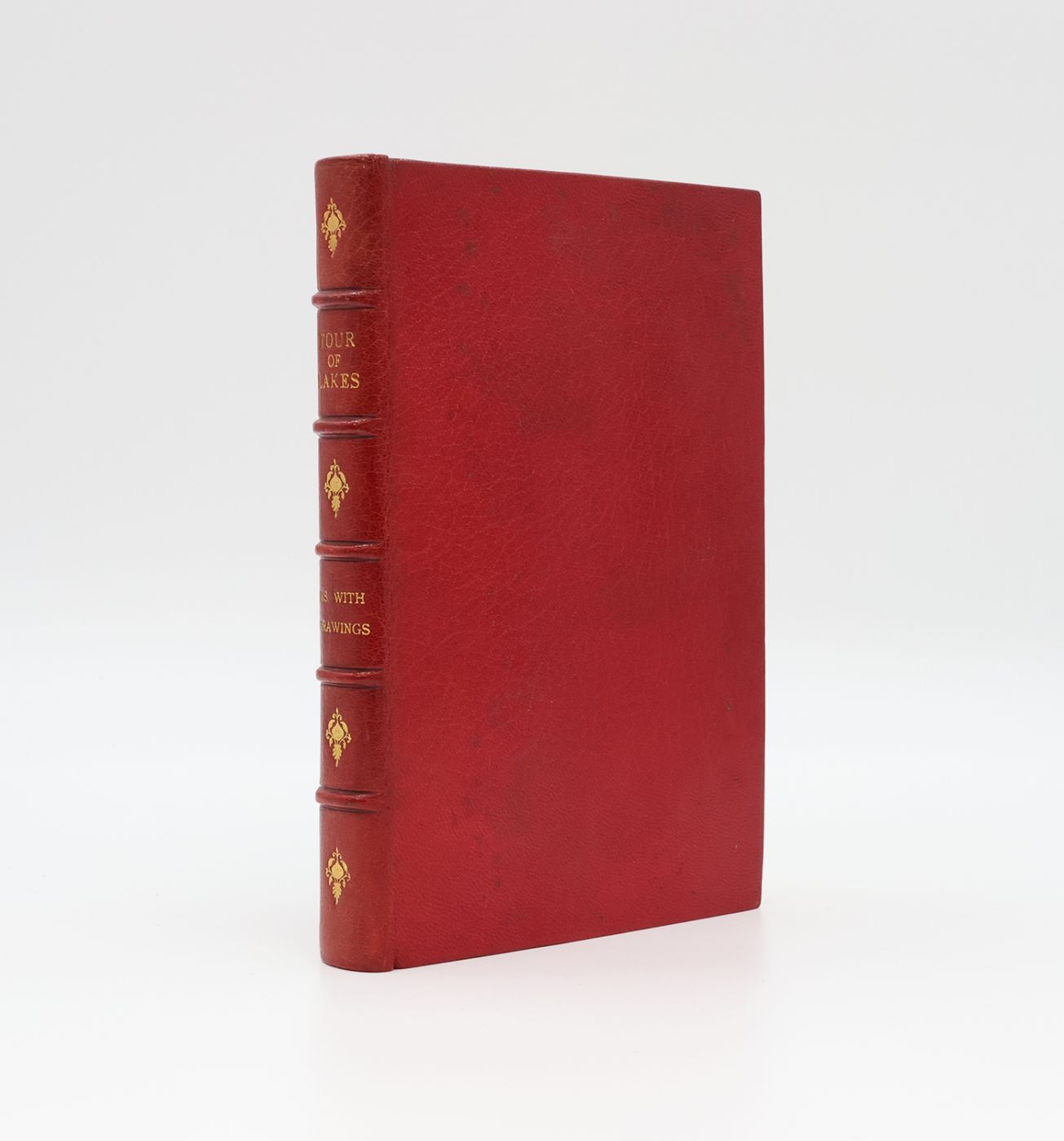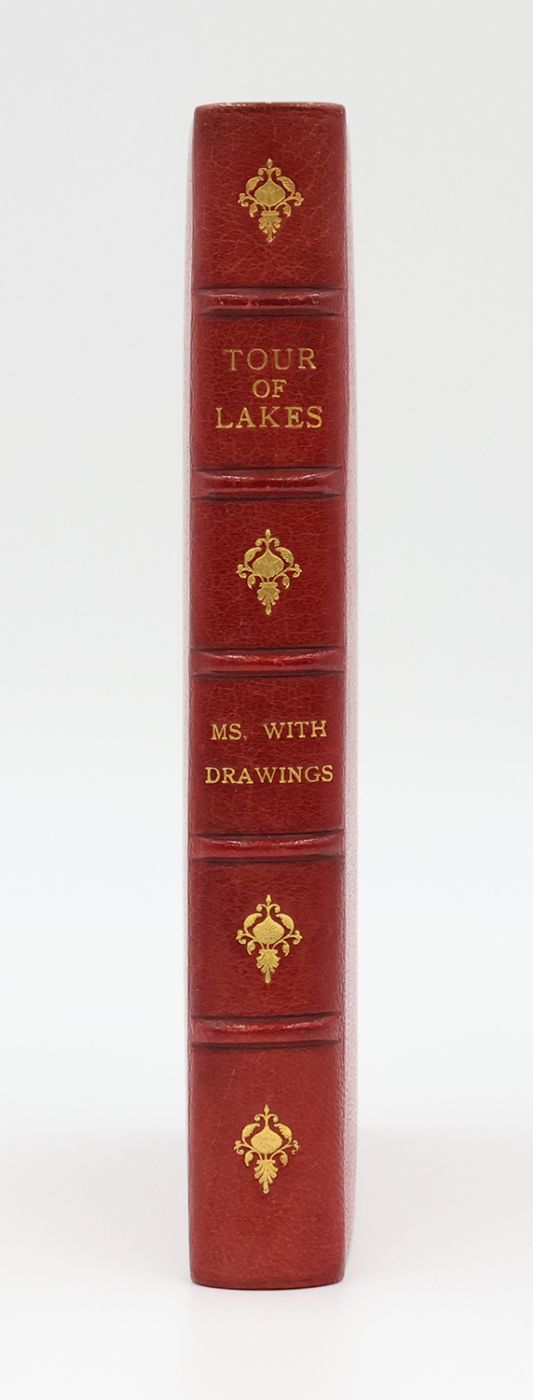JOURNAL OF A TOUR TO THE LAKES IN ENGLAND AND SCOTLAND IN THE SUMMER OF 1794
A finely illustrated manuscript travel journal comprising 225 numbered pages, the text in a neat calligraphic hand (mostly but not exclusively to the recto) with an additional 21 pages of original drawings in pen, ink, wash or watercolour. Bound in handsome nineteenth century full red crushed morocco by Zaehnsdorf, London. All edges gilt. One of the watercolours "View on the Eske" is signed and dated within the image and again in black ink to the lower margin "Feb 1795 - John H. Moggridge". Several drawings have manuscript titles in pencil to the upper edge. The placement of a few drawings differ to that suggested in the manuscript index with one page (seemingly of two drawings) not present at all, with no sign (other than the presence of a tissue guard) of the page having been removed from the present binding. In fine condition.
John Hodder Moggridge (1771-1834) was born into a prosperous Bradford upon Avon family who were involved in the textiles industry. A leading Unitarian and something of a radical among industrialists, he became a member of the landed gentry in 1803, living in Dymock, Gloucestershire, where he had inherited an estate following the death of his father. He served as Sheriff of Gloucestershire in 1809. In 1812, he moved to South Wales (where he lived for the rest of his life) and used his considerable wealth to set up "model" communities, founding the towns of Blackwood and Ynnysddu in Monmouthshire to provide better living conditions for poor workers. The journal covers a month long tour of England and Scotland combining observations topographical and architectural with commentary of local industries and how they are shaping the cities and lives of the lower classes. Starting from Leigh in Gloucestershire on July 9th 1794, taking in the Roman pavement at Rodburgh, River Avon at Tewksbury, the Lanthony Priory near Gloucester and Saxon Arch at Ribblesford in Bewdley. Reaching Birmingham, Moggridge notes the "ingenuity" of button manufacturing and passing through the Staffordshire potteries much admires Wedgewood, "whose exertions and benevolence will be repaid by the love and admiration of present and succeeding generations". In Manchester he travels along the Duke of Bridgewaters Canal, which supplied coal to the city and surrounding areas. On to Carlisle, through the "mountainous and wild country" between Kendal and Penrith, with Penrith castle noted for its "magnitude". Passing the "picts walls, so celebrated in history, erected by the emperor Hadrian", then crossing the border through to Gretna Green, up to Glasgow and its Cathedral. The author recounts his journey to the largest lake in Britain, Loch Lomond, an ascent of Ben Lomond and the pleasure he took from seeing the "sublime" view at the summit. In Edinburgh he considers the topography of the area and notes the Parliament, Castle and Holyrood House, with an excursion on horseback to Roselin Castle and the gothic architecture of Roselin Chapel. Passing through "wild and barren country" and along the River Tweed back towards Carlisle. The final 60 pages relate to the "rich and luxuriant country" of the Lake District at a time when tourism in the area was in its infancy (not until the early nineteenth century, and the first generation of the Romantics such as Wordsworth, Coleridge and Southey, that the Lake District became a popular tourist destination). Visits to Lake Bassenthwaite and surrounding cascading waterfalls, then Derwentwater, with Skiddaw Mountain at its edge and wooded lands surrounding it. Along to Grasmere, with the cascading Rydal falls viewed from the summerhouse in Sir Michael Le Flemings pleasure grounds, then Ambleside, with "delicious views" of the tours end. Lake Windemere "resembling a broad winding river" with beautiful islands and the "richest and most luxuriant woods", which frame "a striking contrast to the unclothed surface of the summits of the opposite mountains".� John Moggridge's lifelong interest in natural history and geology was inherited by his children and grandchildren. His son Matthew (1803-1882) was a Fellow of the Linnean, Geological and Zoological Societies and married a daughter of Lewis Weston Dillwyn, the Swansea industrialist and amateur naturalist. Their son John Traherne Moggridge (1842-1874) was an entomologist and botanist who corresponded with Charles Darwin.
Stock code: 24916
£4,950
Published:
Category
Original ArtworkSigned / Inscribed
Non-fiction
Manuscripts
Bindings
Maps
Art Books
Recent Acquisitions
Natural History
Architecture
Travel / Exploration


